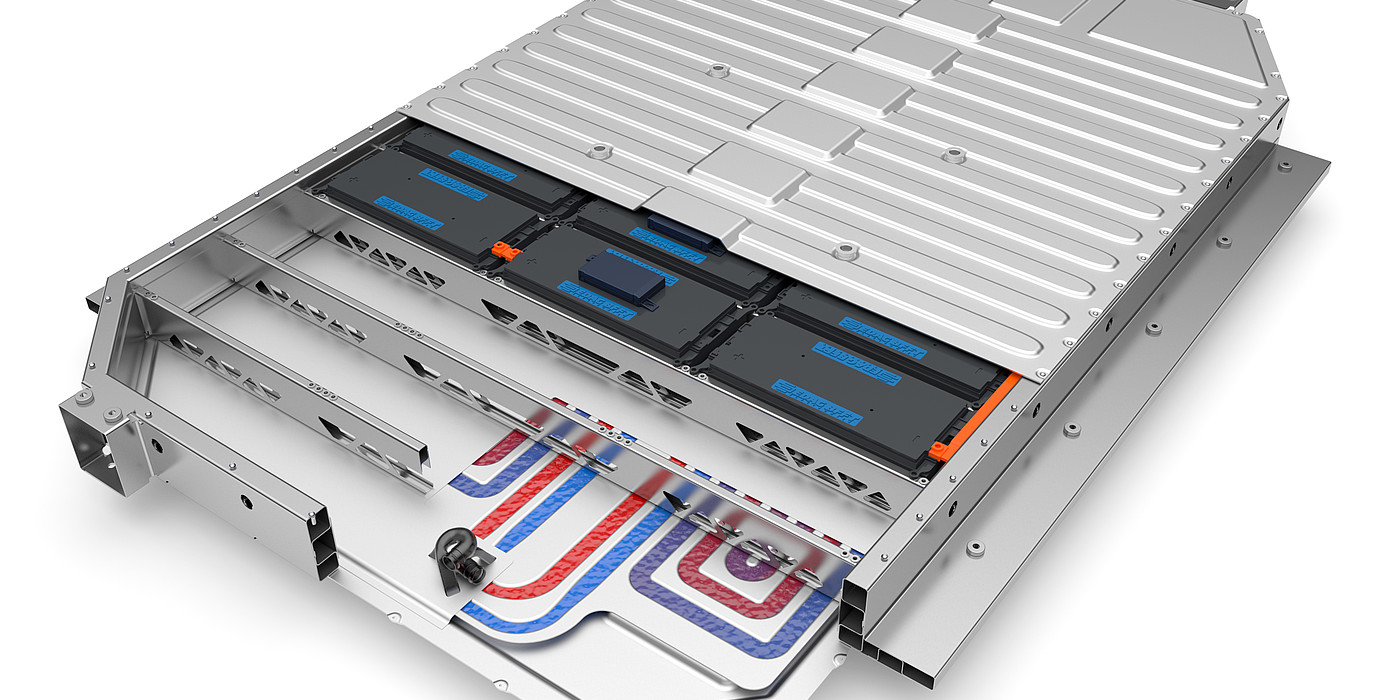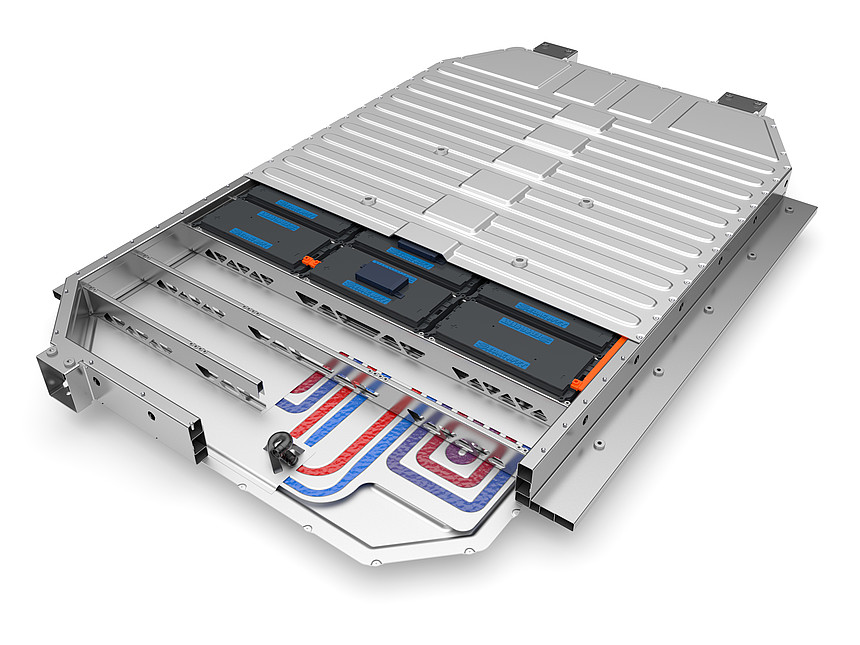In particular, the development of a vehicle system as complex as the battery box requires the kind of continuous engineering process chain realised and demonstrated by the interdisciplinary cooperation between EDAG Engineering, EDAG BFFT Electronics and EDAG Production Solutions, in which software partner Siemens, user and module supplier Baomarc, and the expertise of Cloos Schweißtechnik were also involved.
To ensure that SCALEbat is suitable for international use, the EDAG Group's engineers and their partners also took future crash requirements from a large number of target markets into account during its development. Should a crash occur, SCALEbat has optimised load paths specially designed to meet the ambitious requirements for the protection of the battery modules and passengers in the event of a side or head-on collision.
The EDAG Group experts used steel roll-formed profiles for the frame structure of the battery housing, which, especially with the underlying future assumptions, enabled them to achieve enormous cost-saving potential with significantly higher production rates than today. Compared to conventional light metal or cast metal designs, investment costs are also significantly lower; also, with SCALEbat there are hardly any weight disadvantages, and those that do exist are moderate. During the conception and design of the roll-formed profiles, the partners from Baomarc contributed their many years of experience in the design of cost-effective and production-friendly systems. The structural design of the roll-formed profiles enables them to be adapted to specific customer requirements and local preferences such as vehicle size or battery module type, as well as to the different performance levels for the eDrive.
This leads to the ideal structural integration of the various battery systems into the battery box. The use of highly flexible laser trims results in a high degree of freedom of design to provide the roll-formed profiles with load-specific hole patterns and manufacture these flexibly in a wide range of variants.
With the help of Cloos Schweißtechnik's low-spatter, heat-reduced and optically monitored MAG welding process for media-tight weld seams, it is possible to comply with the requirement that the battery box frame should be gas and media-tight.
The base plate of the battery housing consists of a sandwich panel composed of three aluminium deep-drawn components. The sandwich panel was designed in such a way that it fulfils the overrun protection and bollard test requirements on the one hand, while on the other, the base plate contains the cooling management system, which dissipates the heat generated by the battery modules during rapid charging and load cycles.
The cooling management system consists of three separate cooling circuits which dissipate the heat generated by the battery modules with the aid of the coolant. In order to achieve the most homogeneous temperature distribution possible, the cooling channels are arranged according to the "counterflow" principle (counterflow cooling). The cooling was optimised with the help of cyber-physical simulations. The volume flow of the circuits can be individually regulated by means of an active valve control in the inflow, in order to optimise the battery service life on the one hand, and on the other, to provide additional cooling for any battery module affected in the event of a thermal runaway defect, so as to delay the defect. The valve controls are located in an additively manufactured coolant distributor, which is also flow-optimised.
The cover plate, which seals the battery housing so that it is gas-tight after the battery modules and components have been assembled, is also made of aluminium. The scalability for different battery systems in the longitudinal direction is guaranteed by means of an appropriate cell arrangement and wiring. The basic design includes low, mid & high-range variants with 57 kWh, 86 kWh and 114 kWh battery capacity respectively.
To increase the design status and process reliability of the SCALEbat battery housing, the EDAG Production Solutions experts developed a Smart Factory production concept, taking into account production rate scenarios of 50,000 - 300,000 per year. State-of-the-art automated guided vehicles and man/machine or machine/machine assistance systems were integrated into the production concept. The Smart Factory enables high scalability for future type and quantity scenarios for eMobility in our society, especially in the emerging markets.
Optionally, a plastic 3D printed active coolant manifold can be implemented to thermally manage the heat generated during rapid charging and load cycles. This use case was developed on the basis of future factory planning for additive manufacturing, and shows that 3D printing does not have to be expensive and that manufacturing costs are becoming more acceptable.
The software used by Siemens and the integrated PLM data process chain, starting with the first concepts and continuing with crash and CFD simulations through to the creation of the digital factory, made it possible to implement a very targeted and extremely efficient project feasibility in terms of globally networked engineering, a basis for efficient, interdisciplinary and international cooperation in distributed teams in requirements management, engineering, prototyping, production planning, plant construction and start of production.

